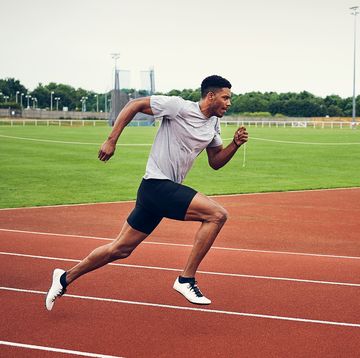If you want to toughen up, you could take extreme measures, such as sitting in an ice bath or sauna for increasingly long times. Or you could just go for a run, suggests new Australian research.
Previous research has indicated that endurance athletes can have higher pain tolerance, but not a higher pain threshold, than non-athletes. That is, athletes and non-athletes start finding something painful at the same point, but once in pain, the athletes can tolerate the sensation for longer than non-athletes. These findings, however, raise a chicken-or-egg question: Do some of the people do well as athletes because they naturally have a greater pain tolerance, or does being an athlete lead to developing greater pain tolerance?
The new Australian research circumvented that issue by measuring pain threshold and pain tolerance in a group of non-athletes, and then turning half of them into athletes and remeasuring pain threshold and pain tolerance after six weeks of training.
The result? On one test, the people who trained increased their pain tolerance by 20 per cent, while their pain threshold didn't change. They found a given sensation as painful as before, but could handle that level of discomfort for significantly longer. The non-athletes were as relatively wimpy or tough as during the first round of testing.
One of many interesting things about this study is the scant amount of training that apparently led to such a dramatic increase in pain tolerance. The people who became exercisers rode a stationary bike three times a week, for 30 minutes at a time, at a moderate intensity.
Also worth noting is that some of the pain-tolerance tests were done on the participants' arms. The pain-tolerance test in question consisted of withstanding what the researchers call "ischemic noxious stimuli," which they induced by decreasing blood flow (and increasing pain) by applying a tourniquet. Cycling, of course, doesn't specifically target arm muscles, so the increase in pain tolerance couldn't be attributed to the exercisers becoming used to discomfort there.
"This result provides evidence for a central mechanism as the primary modulator of the increased pain tolerance and suggests a new, psychological adaptation to training," said the researchers.
Getting fit can make you tougher, and getting tougher might also help you get that much more fit, the researchers speculate. In their words, "Exercise training may facilitate the development of brain function that increases tolerance of these signals and associated sensations, and this increase in tolerance may contribute to improved endurance performance."













